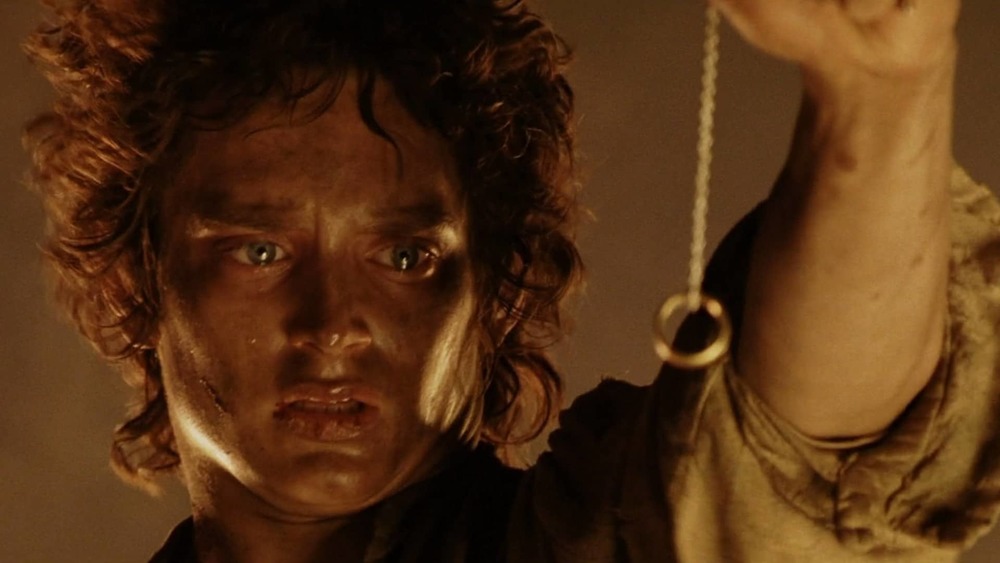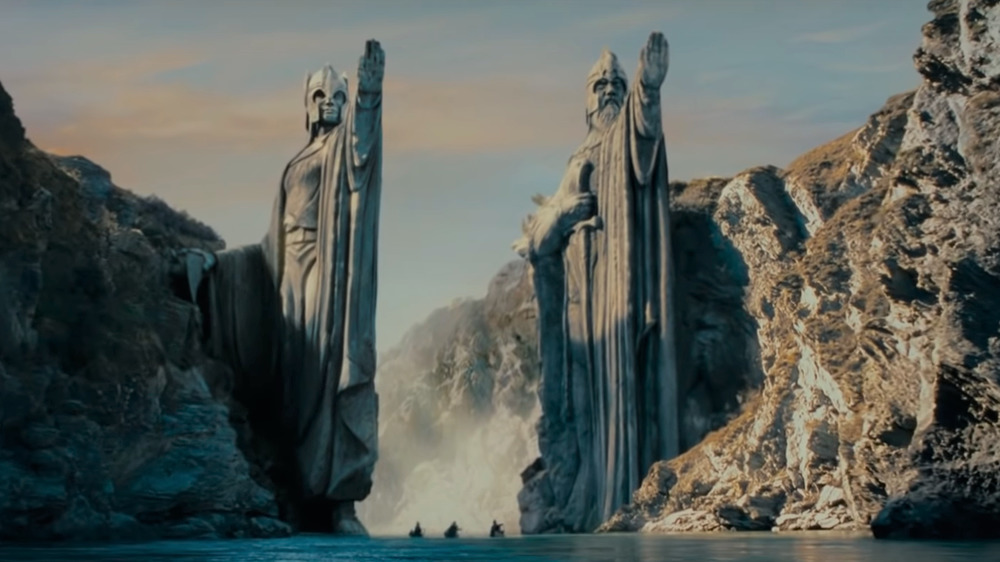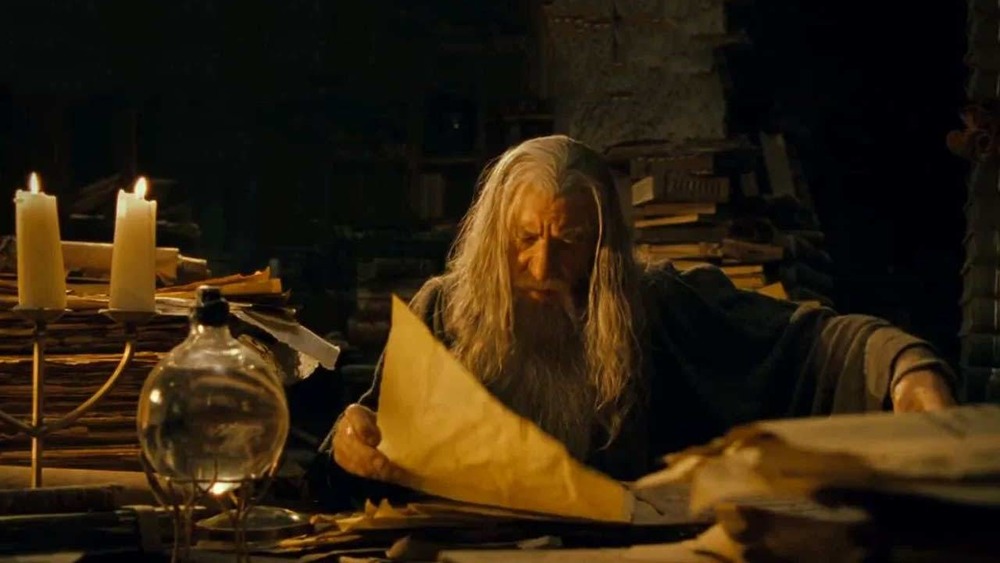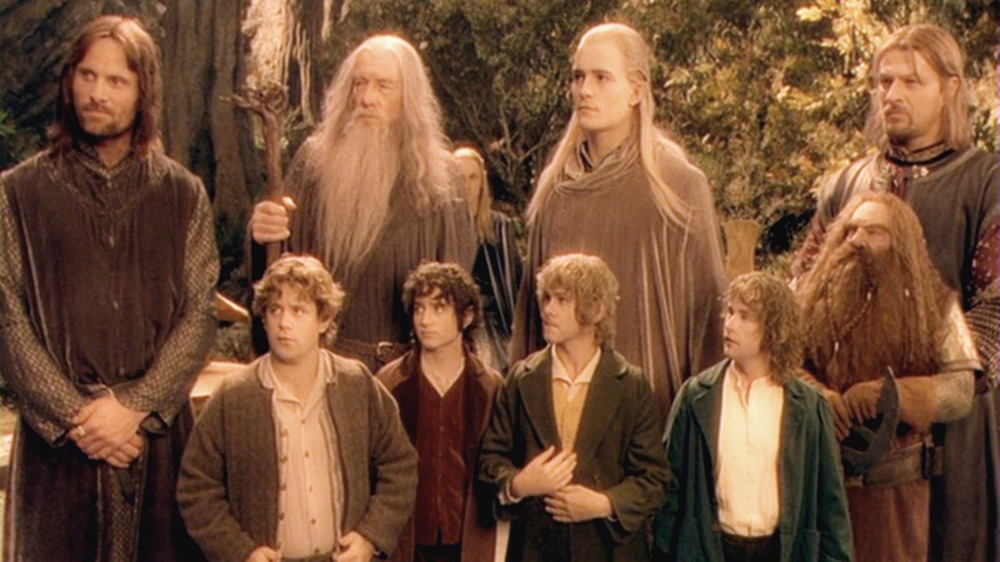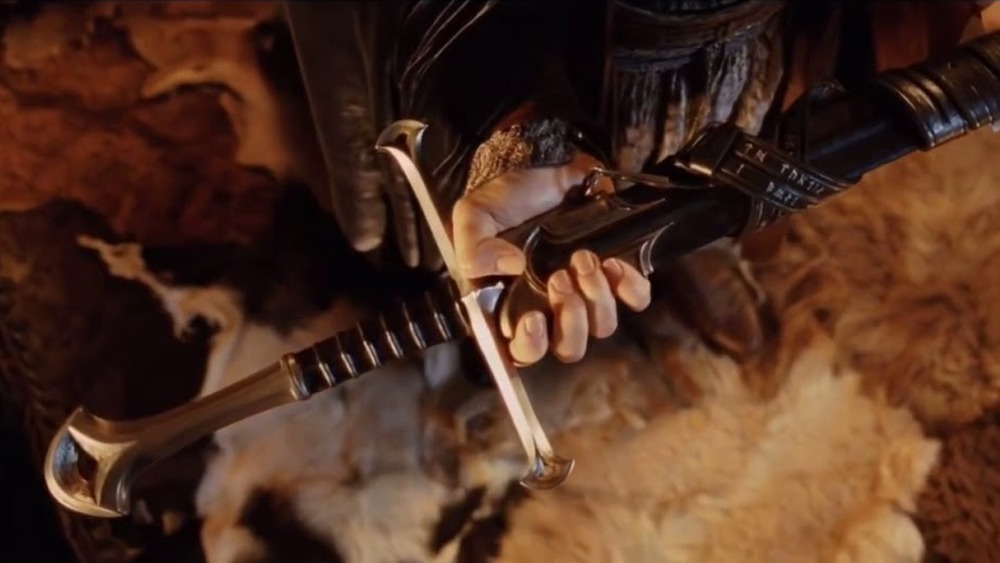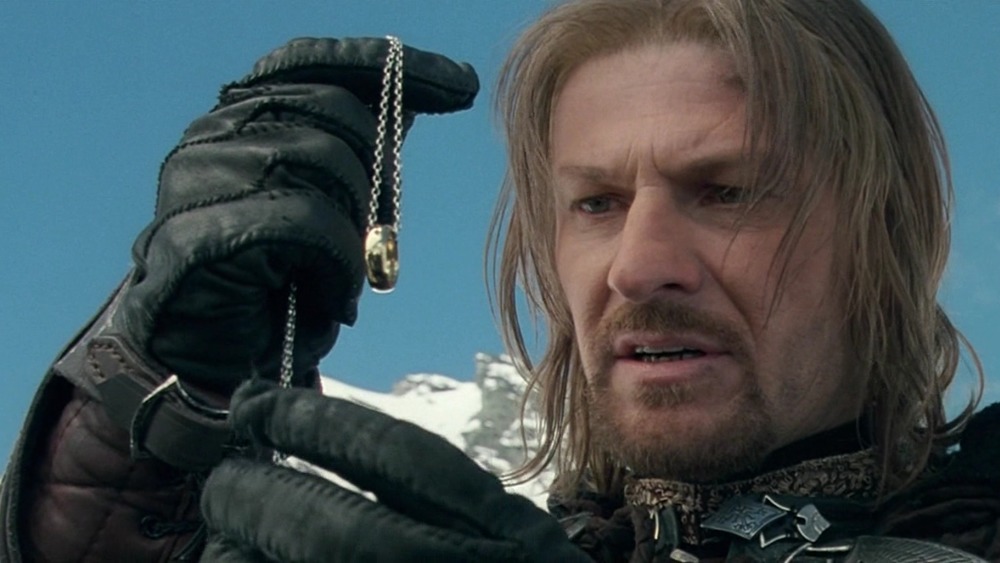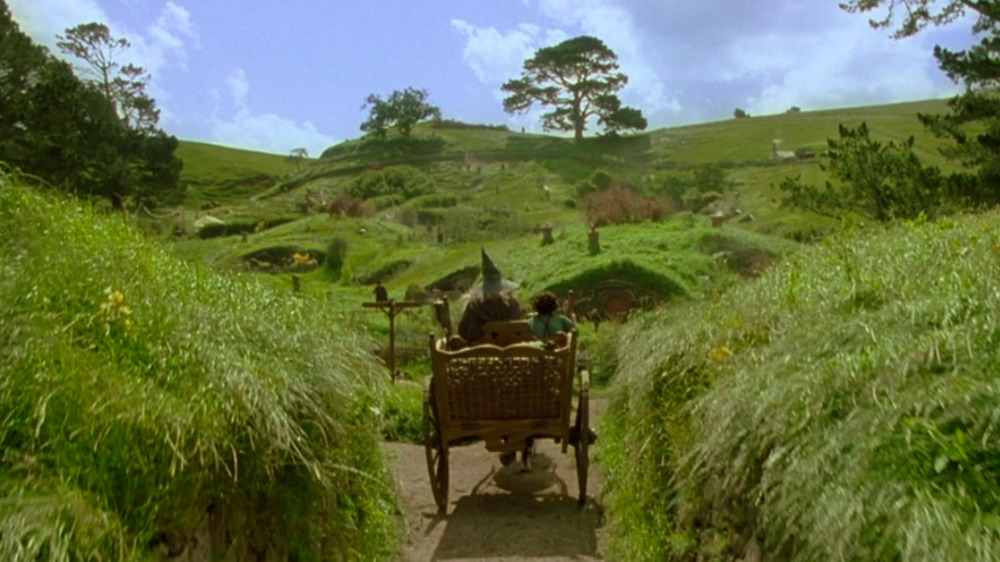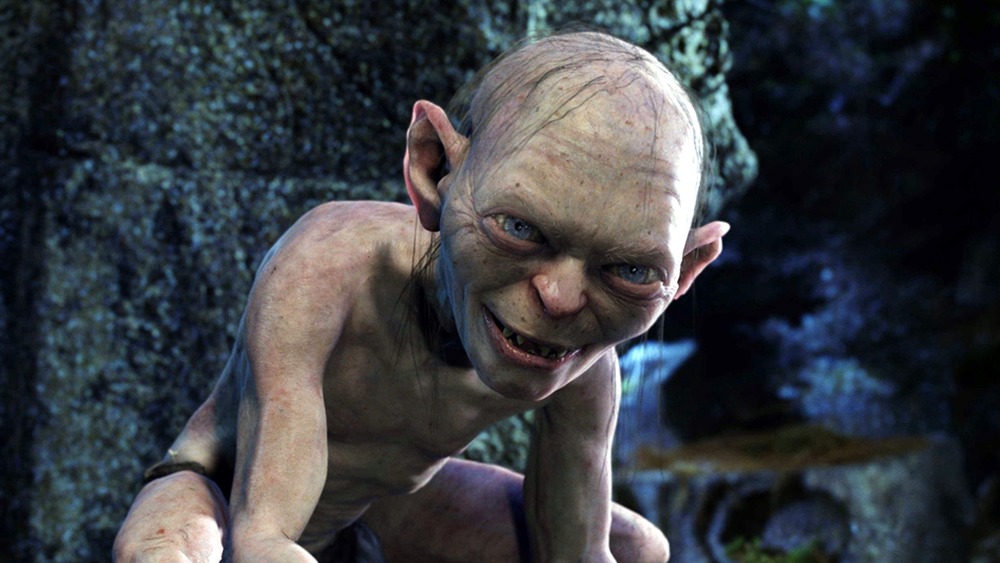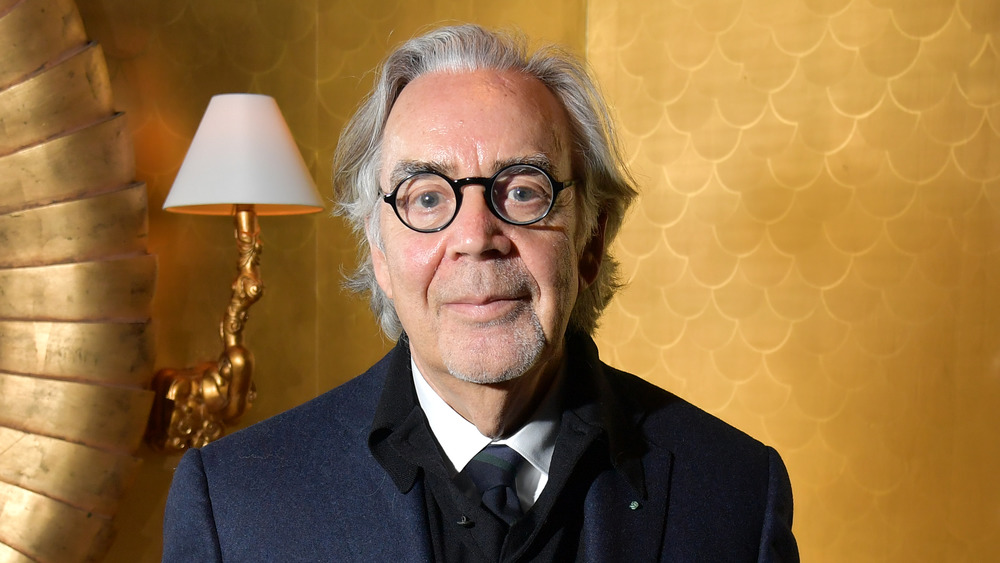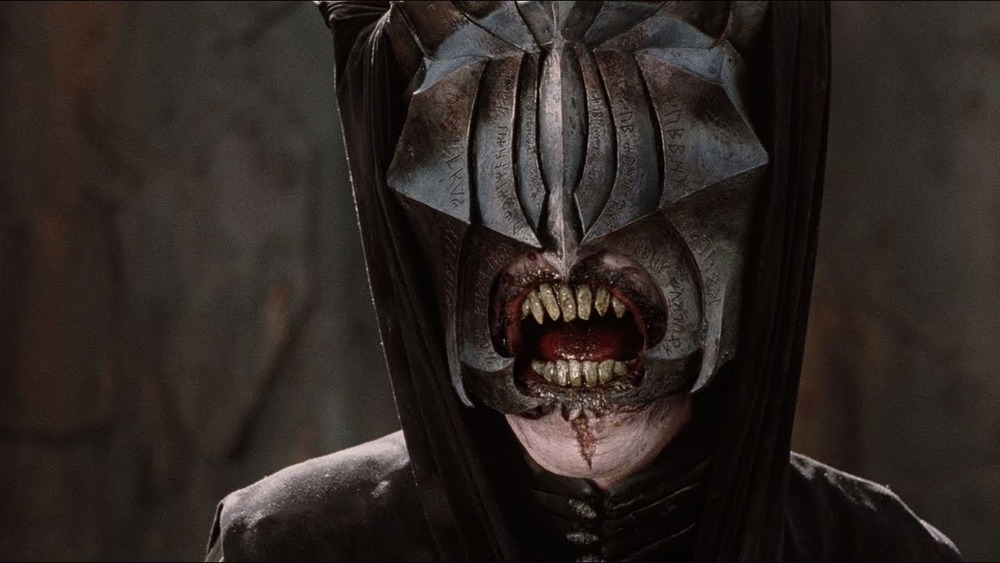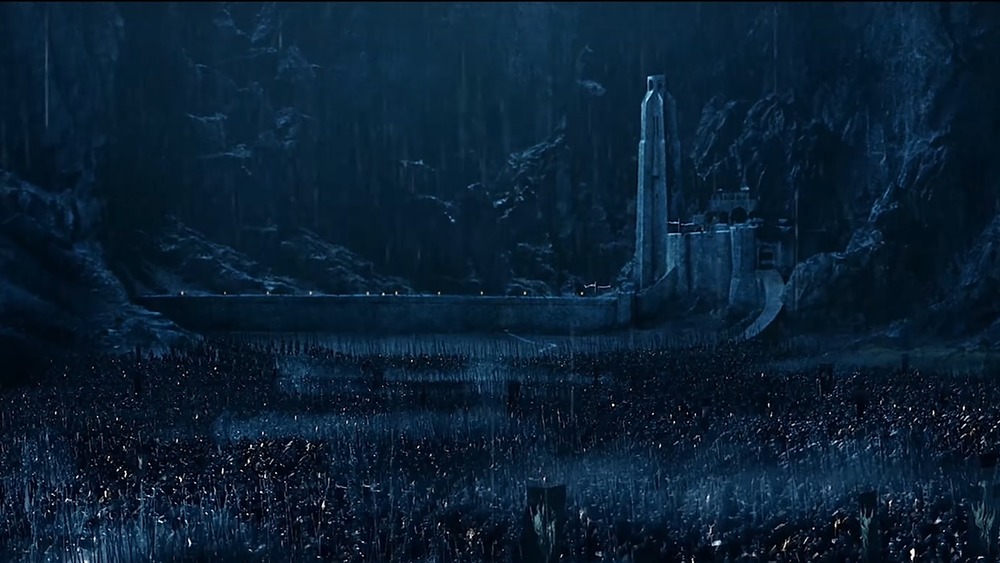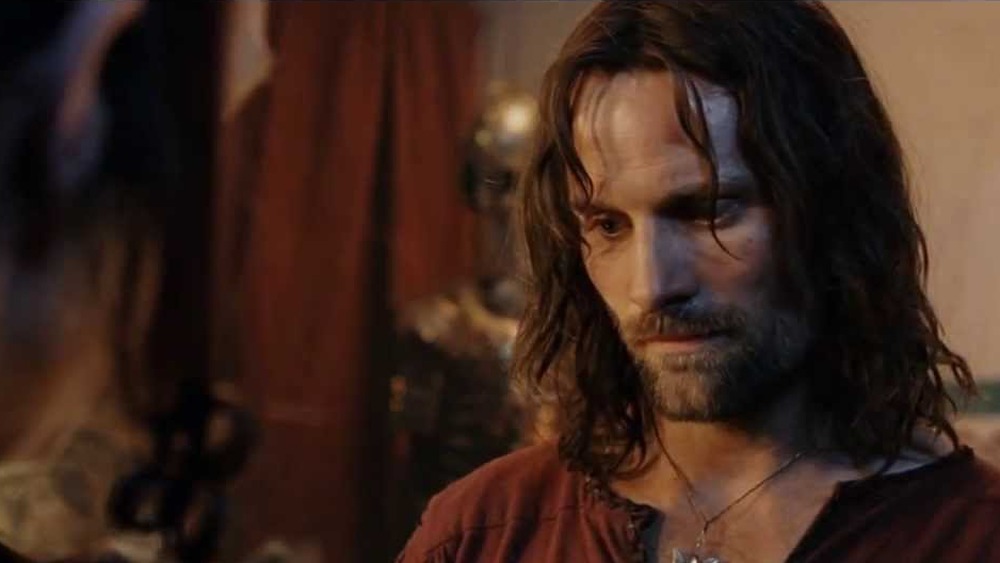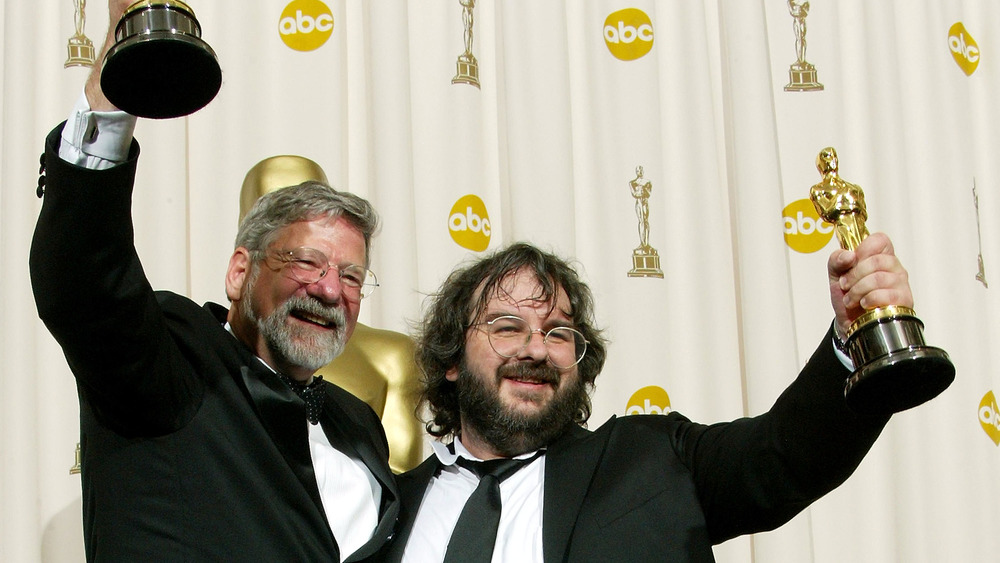Why The Lord Of The Rings Are The Best Fantasy Films Of All Time
The Princess Bride, Pirates of the Caribbean, The NeverEnding Story, Pan's Labyrinth – there are a ton of classic fantasy films out there. Some of them are iconic, others are just plain good, and a select few are downright awful (we're looking at you, Eragon). While there's clearly plenty of competition out there, of all the fantasy films to grace the first century of cinema there's only one story that can confidently be declared "the best." There's just one trilogy that can genuinely claim to rule them all.
Peter Jackson's The Lord of the Rings films have remained a dominant trifecta in the realm of cinematic fantasy from the moment they first flashed up on the screen. From the sheer size and ambition of the project to perfect casting, ideal filming locations, and a mountain of quality source material, here are a few of the best reasons that Jackson's LOTR trilogy has been and continues to remain a collection that can truly claim to contain the best fantasy films of all time.
With The Lord of the Rings, ambition is everything
At this point, fantasy has become a cinematic byword. It doesn't matter if you're binging The Witcher on Netflix, rewatching Game of Thrones on HBO, or pulling out your Harry Potter luxury DVD set, you can access fantasy entertainment practically everywhere you turn. This makes it easy to lose sight of how unique The Lord of the Rings was when the movies first came out.
We're not claiming that Jackson's movies were the first fantasy films ever made. That would be like saying 2008's Iron Man was the first superhero flick ever filmed. It simply isn't true. There were plenty of fantasy films produced before The Fellowship of the Ring arrived in theaters in late 2001. However, none of the films that predated this point in time had anywhere near the level of ambition that The Lord of the Rings aimed for. The sheer scope of the project was impressive on every level. From jaw-dropping panoramic shots to oversized sets, an epic score, an armory of weapons, and an ocean of make-up and prosthetics, there's nothing about this trilogy that could be considered small.
The best testament to the scope of the movies can be seen in how well they still hold their own, even against more modern, CGI-infused competition. While they have their cringe-worthy moments, all three films still hold up under scrutiny — which certainly can't be said for all movies from the early years of the 21st century.
The movies have great source material to lean on
In most cases, a book-to-movie adaptation is only as good as its source material. Sure, every once in a while you'll get an eye-popping movie experience that surpasses its original printed inspiration, but by and large, most movies hinge on the quality of the original tale. This is especially true for fantasy films, which tend to lean heavily on the world-building and backstories developed by their famous authors.
This is an area where The Lord of the Rings has no equal. J.R.R. Tolkien's Middle-earth creation stands as one of the most triumphant world-building experiments in literary history. Born out of a lifetime spent steeped in epic mythology and ancient lore, Middle-earth possesses a uniquely deep sense of depth unparalleled in modern fiction. This is partly due to the fact that Tolkien chose quality over quantity. Rather than produce a voluminous amount of material to flesh out his world, the Oxford professor continued to comb over the same handful of manuscripts for months and years and even decades on end. He spent time fine-tuning details, weeding out discrepancies, and perfecting a menagerie of different cultures and languages.
Naturally, this provided Jackson and company a perfect blueprint to build on when they began developing The Lord of the Rings for the silver screen. While there were details to be filled in and creative liberties to be had, there's no doubt that no one lacked inspiration when it came to the source material itself.
Few movies have had such impeccable casting
Most casting for major movie productions tends to fall somewhere between two extremes. The first (and most common) option is to land major A-list actors and pop-culture icons who can draw the crowds and soak up the screen time. The other casting path is to primarily focus on quality actors regardless of their popularity. Shows like The Office and Band of Brothers come to mind. When talent is prioritized over reputation, it tends to take the pressure off individual performances and allows the entire production to meld together as a single experience.
When it comes to The Lord of the Rings, the casting calls ended up being an interesting mix of these two extremes. On the one hand, plenty of bigwig names were offered various roles. The list of well-known actors that turned down a part in the project included Sean Connery, Kate Winslet, Uma Thurman, Nicolas Cage, Russell Crowe, and Christopher Plummer.
Peter Jackson certainly had his eye on some top-notch talent, and he still ended up recruiting plenty of big names like Sir Ian McKellen and Cate Blanchett. Even so, the final roll call ended up including plenty of fledgling or underappreciated actors, as well, like Orlando Bloom and Sean Bean. Even last-minute replacements like Viggo Mortensen fit their characters like a glove. This cobbled-together crew created the perfect acting amalgam that managed to put on a collective performance for the ages.
The attention to detail is overwhelming
Another area where Jackson's trilogy particularly stood out was in the impressive attention given to the smallest details. The hours of bonus material that have been released over the years are full of behind-the-scenes tidbits that reveal the jaw-dropping nature of the production. Numerous intricately detailed model sets were created. Scripts were constantly being tweaked and rewritten. Entire conversations were translated and then performed in Elvish.
Of all the details, the costumes are the area where the production team's prowess shined the brightest. Just to name a few of the splashiest factoids, professional swordsmiths were hired to create weapons for the films, roughly 10,000 arrows were made for The Fellowship of the Ring alone, and 12.5 million rings of chainmail were forged for the countless suits of armor seen throughout the trilogy. Plus 1,800 pairs of prosthetic Hobbit feet were also made — and that's just for the four main Hobbit actors alone.
One needs to look no further than the Lord of the Rings' cinematic "sequel prequels" (read: The Hobbit trilogy) to see how much the original trilogy stands apart from other fantasy productions. While The Hobbit films are impressive in some ways, they clearly lack the same level of detail that the LOTR trilogy boasts. Like so many other films in the genre, The Hobbit movies choose to lean on CGI far too often as a lackluster alternative to realistic props — especially when compared to Jackson's obsessively detailed LOTR trilogy.
The moral aspect is subtle yet strong
While things like the attention to detail and impressive ambition are obvious, the moral message of the films quietly makes a great case for the popularity of the trilogy as well. On the one hand, iconic series like The Chronicles of Narnia tend to be fairly one-dimensional when depicting the battle between good and evil. On the other hand, popular shows like Game of Thrones replace obvious moralizing with a deeply disturbing sense that everyone and everything is about as screwed up as it gets.
While most fantasy films fall somewhere in between these two moral extremes, The Lord of the Rings manages to walk right down the center with aplomb. Tolkien's stories simultaneously exude a sense of clear morals — the good guys are obviously on the right side of history and the bad guys are obviously in the wrong. At the same time, the author imbues the entire story with a powerful sense of the individual struggle for righteousness (or the lack thereof). Boromir genuinely falls to temptation before redeeming himself. The long history of Elves, Men, and Dwarves is tumultuous and full of hatred and violence. Gollum is a compelling case study on the internal struggle of good and evil all on his own. The Lord of the Rings provides an impressive blend of relatable individual struggles while simultaneously setting up a clear "good versus evil" scenario that allows you to truly root for the good guys.
LOTR understands the first rule of real estate
Location is everything, even in Hollywood. Scratch that – especially in Hollywood. Unless you're angling for a classic like 12 Angry Men where the specific setting is the least important factor in the film, movies need to be filmed in the right locations — especially when you're talking about epic fantasy. This is a fact that Peter Jackson was clearly aware of, as his decision to shoot a large portion of The Lord of the Rings in his native country of New Zealand has paid off in spades over the years. The mesmerizing landscape of the island nation makes for a perfect real-world Middle-earth. The Kiwi countryside provides everything a LOTR production crew could possibly desire, from rolling green hills perfect for Hobbiton to Misty Mountain-esque bluffs that take your breath away.
The decision to film the bulk of the trilogy against such a rich backdrop clearly helped to bolster the New Zealand film industry, and the nation has continued to remain a Hollywood hotspot ever since. Heck, even Amazon's Middle-earth series couldn't do better than the Land of the Long White Cloud. Leaning on New Zealand's natural beauty was a brilliant movie. It lent a degree of stunning visual gravitas to the entire production that can never be rivaled by a green screen or a computer generated landscape.
The use of CGI (and lack thereof)
Some films are praised for their tasteful use of CGI. Others are lauded for a deliberate effort to back off on the computer-generated graphics. With The Lord of the Rings, you get the best of both worlds.
On the one hand, the trio of movies benefited from the fact that they were well-funded and ambitiously filmed when CGI was still in its infancy. This was just a year and a half after Jar Jar Binks came into existence, so CGI expectations were about as low as they could get. That said, the groundbreaking technology used to turn Andy Serkis into Gollum was particularly stunning — not to mention the computer generated geographic locations and the countless panoramics of Elvish warriors, Orc armies, charging Rohirrim, and so on.
On the other hand, with CGI still fairly unstable, the production crew naturally depended heavily on human actors covered in makeup, especially when it came to the close-up shots. This led to a remarkably realistic feeling that most modern fantasy films completely lack. No matter how good the graphics, nothing beats a goblin face that consists of a real-life actor plastered in makeup and covered in a wig. Once again, one needs only to look as far as The Hobbit trilogy to see just how bad excessive CGI can look, even in Middle-earth. The balanced and purposeful use of computer-generated imagery in the LOTR films is part of what makes these films stand out as exceptional.
The trilogy has the perfect score to set the tone
A movie is only as good as its music. Seriously, it only takes a few minutes spent watching unfinished deleted scenes or even a blooper reel of raw outtakes to realize how much a quality score can make a difference in the emotions and impact of a scene. While there are plenty of amazing fantasy soundtracks that have been produced over the years, very few of them are as universally respected as Howard Shore's Middle-earth-inspired compositions.
It doesn't matter if you're watching Frodo and Sam amble through the Shire, Gandalf confront the Balrog in Moria, or Aragorn storm the Black Gate "for Frodo" — if you're not moved by the music, you aren't human. Shore's score isn't just good, it's become synonymous with everything Tolkien. It's the audible version of an Alan Lee painting. Without its award-winning music, it's difficult to see the trilogy reaching anywhere near the same level of perfection. From the emotional highs to the nostalgic lows, the soundtrack of The Lord of the Rings stands in an echelon all its own in the fantasy genre. It elevates the films that it inhabits and is one of the key aspects that earn the LOTR trilogy the title of "the best."
The extended editions make the movies so much better
The theatrical releases of The Lord of the Rings were long and impressive all on their own. However, both length and quality were given a run for their money when the extended editions were finally rolled out. Starting with the runtime, the sheer quantity of additional material alone makes the extended editions feel more like a tetralogy. When you add up all three extended editions, they end up adding over two hours to the original length of the theatrical versions — which already stood at over nine hours of glorious entertainment. Providing access to over 120 minutes of fully edited and produced bonus material is a treat, to say the least.
Even better is the fact that the extended editions are essential to rounding out the story as a whole. From showcasing life in the Shire to providing some ugly closure for Saruman (Christopher Lee) to introducing characters like the Mouth of Sauron (who had been completely cut from the theatrical version), the extended editions do wonders when it comes to providing a more comprehensive story. Without an extended treatment like this — which makes The Return of the King alone a four-hour-plus viewing — it's difficult for any fantasy franchise to compete in either the quantity of material or the quality of the tale it tells.
Don't forget the massive movie sets
With limited CGI and massive world-building requirements, it's no surprise that Jackson and company had to put in some pretty hefty legwork when it came to the sets. Sure, they had the gorgeous backdrop of New Zealand to help, but majestic mountains and undulating hills aren't quite enough all on their own. In order to bring iconic Middle-earth locations like Hobbiton, Rivendell, and Minas Tirith to life, the production crew had to build – a lot.
From carving out habitable Hobbit holes to literally building significant portions of places like Helm's Deep and Edoras, the construction efforts that took place on The Lord of the Rings sets were bonkers, to say the least. Sure, CGI was used to help fill in certain spots, but it doesn't change the fact that walls, towers, houses, and palaces were literally constructed from scratch on such a massive scale that the feat has hardly ever been reproduced before or since. It's such an impressive achievement that it automatically gets the trilogy on the shortlist of all-time great fantasy films.
Continuity makes a big difference
When you're dealing with multiple films or seasons of a story, continuity is key. Maintaining a constant and unbroken delivery of a multi-part narrative can make or break the fantasy experience. The Chronicles of Narnia suffered from this when the seven-part story petered out after three movies had been released in inconsistent intervals and from different production companies. Even Game of Thrones experienced some continuity issues as it ran out of source material and had to find a way to tie up the story (in an unsatisfactory manner, no less).
This is an area where Peter Jackson's films had a clear edge. The director was working with a definitive trilogy that already started, developed, and concluded in a complete story. In other words, it was a known entity that allowed the filmmaker to plan ahead, create thorough scripts, and film all three movies concurrently. Critically, it also meant that the movies were released three Decembers in a row, from 2001 to 2003. This was perfect pacing that left the public eager for more without either excessive wait times or the opposite problem of overloading them with content à la most modern serial fantasy shows. From consistent spacing in the releases to stability in the visuals, music, scenery, props, and so on, The Lord of the Rings was able to cash in on the continuity factor like few multi-movie fantasy epics have done before or since.
And then there's the Oscar count
There are countless inherent reasons that The Lord of the Rings is the best cinematic fantasy epic of them all. Most of these reasons relate to the films themselves, from their epic vision and source material to their staggering production efforts, incredible runtime, and perfect continuity. No matter how you look at it, there is more than enough evidence of their worth embedded right in the films themselves without the need to drag any forms of external approval into the equation.
Nevertheless, there's one factor outside of the films themselves that is worth bringing up, especially when it comes to making the case for LOTR's dominance in the fantasy genre: the Oscar count. How many other fantasy films managed to rack up 30 Academy Award nominations over the span of three films? Better yet, how many fantasy movies out there have actually, you know, won over half of their nominations? Jackson's team ultimately walked away with 17 Oscars. All three films won awards, with The Return of the King sweeping all 11 of its nominations. While there are plenty of reasons why The Lord of the Rings are the best fantasy films of all times, perhaps the most compelling one of all is the sheer number of accolades that they locked up during their three-year theatrical run. The awards stand as a final, compelling testament to the utterly impressive fantasy creation that is The Lord of the Rings movie trilogy.
